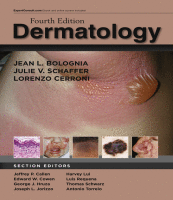Physical Address
304 North Cardinal St.
Dorchester Center, MA 02124

Introduction According to the Diagnostic and Statistical Manual of Mental Disorders (DSM-5), the essential feature of a substance use disorder is a cluster of cognitive, behavioral, and physiologic symptoms whereby an individual continues to use a substance despite significant substance-related…

The skin is our primary interface with the environment. Amongst Earth's creatures, humans are unique in their ability to manipulate the environment by manufacturing clothing, shelter, and heating or cooling devices to allow them to live in a variety of…

All skin can react to light because it contains molecules (chromophores) whose chemical structures are capable of absorbing ultraviolet radiation (UVR) or other electromagnetic energy. This absorbed energy is then either re-emitted harmlessly as biologically inactive radiation or diverted to…

Key features ▪ Exposure of the skin to UV light has acute, short-term effects and chronic, long-term effects, both of which are wavelength-dependent. Profound effects also occur with non-erythemogenic doses of UV light ▪ UV light affects the skin's immune…

Insects Insect Bites and Stings (Class Insecta) Key features ▪ Pruritic papules sometimes progress to vesiculobullae or persistent prurigo nodularis-like lesions ▪ Papular urticaria may be localized to sites of bites or generalized ▪ Pseudolymphomatous reactions occasionally occur ▪ Anaphylaxis…

Scabies Synonyms ▪ Itch mite infestation ▪ “Seven-year itch” Key features ▪ Human scabies is a pruritic condition caused by infestation with the host-specific mite Sarcoptes scabiei var. hominis , which lives its entire life within the epidermis ▪ Although…

Key features ▪ Protozoa are responsible for many tropical diseases that not only affect large regions of the world but also can have different clinical presentations in the Old World versus the New World (e.g. leishmaniasis) ▪ Protozoal infections can…

Introduction The term “venereal diseases” was historically used to refer to infections that are sexually transmitted, i.e. syphilis, gonorrhea, chancroid, lymphogranuloma venereum, and granuloma inguinale. These disorders are now referred to as “sexually transmitted diseases” (STDs) or “sexually transmitted infections”…

Introduction Viral infections are frequently associated with cutaneous manifestations, especially in children, in whom they are the most common cause of exanthems. An exanthem is defined as a skin eruption occurring as a sign of a general disease. Viral exanthems…

The human herpesviruses (HHVs) are categorized into three groups: alpha, beta, and gamma herpesvirinae ( Table 80.1 ). Each virus contains a core of linear double-stranded DNA, an icosahedral capsid 100–110 nm in diameter, and an envelope with glycoprotein spikes on…